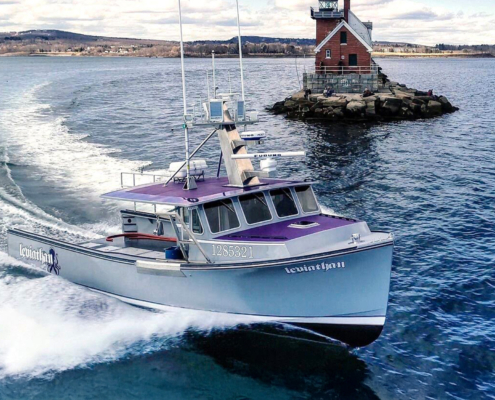 https://blog.durabritelights.com/wp-content/uploads/2025/04/leviathan-boat-on-water.jpg
1250
2000
Abstrakt Marketing
/wp-content/uploads/2024/01/DuraBrite-Logo_6a362a2d-4dff-4723-a7e4-1466056fae1e_220x.png
Abstrakt Marketing2025-04-04 18:45:522025-04-09 17:01:05How to Maximize the Lifespan of Marine LED Lighting
https://blog.durabritelights.com/wp-content/uploads/2025/04/leviathan-boat-on-water.jpg
1250
2000
Abstrakt Marketing
/wp-content/uploads/2024/01/DuraBrite-Logo_6a362a2d-4dff-4723-a7e4-1466056fae1e_220x.png
Abstrakt Marketing2025-04-04 18:45:522025-04-09 17:01:05How to Maximize the Lifespan of Marine LED LightingA Guide to SOS Light Signaling on the Water
When trouble strikes on the water, SOS (standing for “save our souls” or “save our ship”) signals become your lifeline for getting help quickly. Originally a Morse code sequence of three short, three long, and three short signals, the SOS signal has evolved into a universal distress call for maritime emergencies. Whether with lights, sound, or radio, the goal is to alert rescuers to your situation as quickly and clearly as possible.
An Intro to SOS Light Requirements for Boats
Safety on the water begins with understanding the requirements for distress signaling and ensuring that your vessel is equipped to handle emergencies effectively. While using a radio is the best starting point when calling for help in an emergency, this isn’t always possible. That’s why boats operating in U.S. coastal waters, the Great Lakes, or on high seas must carry U.S. Coast Guard-approved Visual Distress Signals (VDS).
If you do not have a marine radio, or yours is not working, [you should] attempt to signal a fellow boater who can either assist or call the Coast Guard for you. In a distress situation, use flares or [another] distress signaling device to catch the attention of people aboard other boats in the vicinity.1
Boats must have VDS for both daytime and nighttime use. An SOS light qualifies as a night signal and is often a preferred option due to its reusability and longevity compared to traditional pyrotechnic flares. Equipping your boat with SOS signaling capabilities is a simple step captains can take to ensure their vessel and passengers are prepared in the event of an emergency.
Daytime vs. Nighttime Distress Signals
- Daytime Visual Distress Signals: These signals rely on visual markers such as flags, smoke, or reflective surfaces like mirrors. While not an SOS-specific method, they serve the general purpose of alerting rescuers to a distress situation. Some high-intensity LED lights can also be visible during the day, aiding in attracting attention.
- Nighttime SOS Signals: Unlike general VDS, SOS signals are specifically coded distress calls with repeating light patterns of three short, three long, and three short flashes. Electronic flares or high-intensity LED SOS lights provide sustained visibility over vast distances and in low-visibility conditions, ensuring rescuers recognize the standardized distress call.
Requirements by Craft Size
The United States Coast Guard mandates specific SOS signaling tools based on the size of your vessel:
- Boats under 16 feet in length are typically required to carry visual distress signals only at night.
- Non-motorized boats like kayaks and canoes may also be exempt during daylight hours in some areas.
Whether you operate a kayak or a yacht, having a reliable light source with SOS functionality adds a layer of safety that can make a critical difference in an emergency situation by making it easier for your vessel to be located when every second counts.
Note: Remember that no single signaling device is ideal for all conditions and purposes, so the best option is to have several signaling devices at your disposal, depending on the emergency.
When Are SOS Light Signals Needed?
Knowing when you might need to use an SOS light signal can make all the difference in emergency situations. These signals are essential tools for visibility and safety in situations like:
1. Medical Emergencies
From sudden illnesses to onboard injuries, medical emergencies can require immediate evacuation. An SOS light signal ensures rescuers can locate your vessel quickly, even in challenging conditions.
2. Breakdowns or Engine Failure
A stalled engine in the middle of the ocean can leave you vulnerable, especially at night. Bright, long-lasting SOS signals that do not drain your boat’s battery alert passing vessels and the Coast Guard to your distress.
3. Severe Weather Conditions
Storms or heavy fog drastically reduce visibility. LED SOS lights cut through fog more effectively, making it easier for rescuers to find you.
4. Man Overboard Scenarios
If someone goes overboard, an SOS light ensures the vessel remains visible to rescue teams, increasing the chances of a quick recovery.
How To Develop an SOS Light Plan
Emergencies on the water are unpredictable, and having a clear plan for using SOS lights can significantly improve outcomes. A detailed SOS light plan ensures that everyone aboard knows their roles and how to respond during a crisis.
Pre-Planning for Emergencies
Your response in an emergency situation is only as good as your preparation. Conduct regular safety drills with your crew or passengers, and assign specific roles, such as activating the SOS light, monitoring communication equipment, or distributing life jackets. Familiarizing everyone with the SOS system helps eliminate confusion when every second matters.
Integrating SOS Lights With Broader Safety Gear
SOS lights work best as part of a comprehensive safety strategy. Pair them with devices like emergency radios, GPS locators, and life rafts to ensure you’re fully prepared for any situation. DuraBrite’s powerful and reliable lights with SOS functionality seamlessly fit into these setups.
Ensuring SOS Lights Are Always Operational
Having an SOS plan means ensuring your equipment is ready to perform. Regularly test your SOS lights and check battery levels, especially before overnight or weekend trips.
Understanding the Light Range of Your Boat
As part of your preparedness plan, consider your boat light’s visibility range. The farther your signal reaches, the better your chances of being spotted in an emergency. DuraBrite lights are designed to be seen at the edge of the water, offering up to 3 nautical miles of visibility. This extended range ensures that even if your vessel is stranded far from shore or in low-visibility conditions, your distress signal remains effective.
Make sure you understand how LED lights can help you stay safe and compliant on the water.
DuraBrite’s SOS Light Functionality: Built for Every Emergency
At DuraBrite, we added SOS functionality to meet the real-world demands of mariners and safety-minded adventurers. Unlike standard lights, our SOS feature is not just an add-on—it’s integrated into every Gen2 light.
- Unparalleled Power: Our LEDs operate at maximum brightness in SOS mode, ensuring your signal is visible for up to three miles around your boat.
- Durability in Harsh Conditions: Designed to withstand saltwater, UV rays, and extreme weather, ensuring your lights work when it matters most.
Experience Seamless Activation with DuraBrite’s Remote Control Key Fob
Emergencies on the water require swift and efficient action, and DuraBrite makes it easier than ever to activate your SOS light signal with our Gen2 lights. Our class-leading remote control key fob allows you to turn on SOS mode from anywhere on your boat while working seamlessly with the dash-mounted rocker switch, offering best-in-class convenience and safety at the touch of a button.
Instant Access to SOS Mode
Whether you’re at the helm, on the deck, or assisting with an overboard emergency, the remote key fob ensures you can activate the SOS light function without delay. This immediate accessibility can make all the difference when time is critical.
Flexibility and Freedom of Movement
The key fob eliminates the need to manually reach the switch on the dash, which is especially useful on larger vessels or in chaotic situations. No matter where you are on the boat, you maintain control over your safety signaling.
Floats for Easy Retrieval
Accidental drops overboard are no longer a concern. The DuraBrite key fob is buoyant, so it floats on the water’s surface for easy retrieval if you accidentally drop it, especially when paired with the included floating keychain.
Designed for Reliability
DuraBrite’s remote control system is engineered for durability and reliability. With our long-range antennae, it offers a 500-foot signal range and is designed to withstand harsh marine environments. Like our lights, the key fob is built to perform when and where you need it.
Stay Safe on the Water with DuraBrite SOS Lights
Emergencies don’t wait, and neither should you. With DuraBrite’s advanced LED SOS functionality integrated into every Gen2 model, you’re equipped to handle any situation with confidence. Explore our collection of marine lights to experience best-in-class power, reliability, and innovation.
1 Chapman Piloting & Seamanship, 69th Edition. Page 413.
Share This Post
More Like This
 https://blog.durabritelights.com/wp-content/uploads/2025/04/leviathan-boat-on-water.jpg
1250
2000
Abstrakt Marketing
/wp-content/uploads/2024/01/DuraBrite-Logo_6a362a2d-4dff-4723-a7e4-1466056fae1e_220x.png
Abstrakt Marketing2025-04-04 18:45:522025-04-09 17:01:05How to Maximize the Lifespan of Marine LED Lighting
https://blog.durabritelights.com/wp-content/uploads/2025/04/leviathan-boat-on-water.jpg
1250
2000
Abstrakt Marketing
/wp-content/uploads/2024/01/DuraBrite-Logo_6a362a2d-4dff-4723-a7e4-1466056fae1e_220x.png
Abstrakt Marketing2025-04-04 18:45:522025-04-09 17:01:05How to Maximize the Lifespan of Marine LED Lighting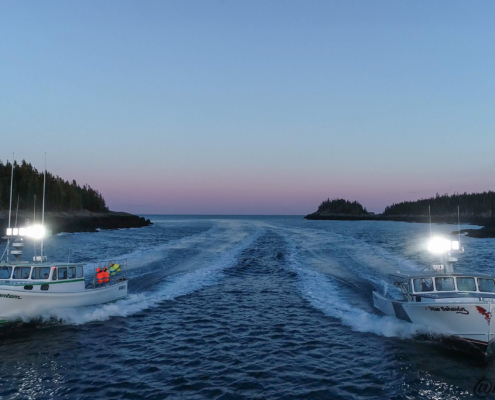 https://blog.durabritelights.com/wp-content/uploads/2025/03/Front-view-of-two-small-boats-on-water-in-the-evening.jpg
1250
2000
Abstrakt Marketing
/wp-content/uploads/2024/01/DuraBrite-Logo_6a362a2d-4dff-4723-a7e4-1466056fae1e_220x.png
Abstrakt Marketing2025-03-31 18:57:432025-04-09 16:50:06The Connection Between Energy Efficiency and LED Lights for Boats
https://blog.durabritelights.com/wp-content/uploads/2025/03/Front-view-of-two-small-boats-on-water-in-the-evening.jpg
1250
2000
Abstrakt Marketing
/wp-content/uploads/2024/01/DuraBrite-Logo_6a362a2d-4dff-4723-a7e4-1466056fae1e_220x.png
Abstrakt Marketing2025-03-31 18:57:432025-04-09 16:50:06The Connection Between Energy Efficiency and LED Lights for Boats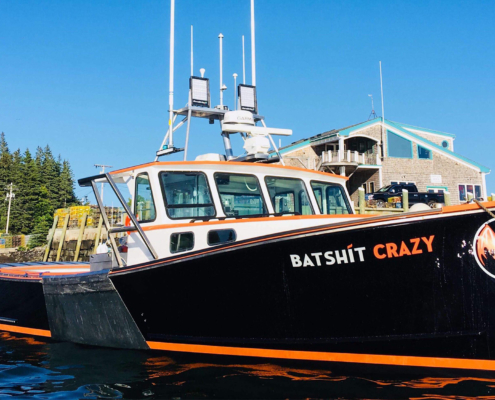 https://blog.durabritelights.com/wp-content/uploads/2025/03/Side-image-of-a-boat-with-lights.jpg
1250
2000
Abstrakt Marketing
/wp-content/uploads/2024/01/DuraBrite-Logo_6a362a2d-4dff-4723-a7e4-1466056fae1e_220x.png
Abstrakt Marketing2025-03-27 18:36:262025-03-31 17:43:25The Hidden Costs of Cheap Marine LED Lights and How to Avoid Them
https://blog.durabritelights.com/wp-content/uploads/2025/03/Side-image-of-a-boat-with-lights.jpg
1250
2000
Abstrakt Marketing
/wp-content/uploads/2024/01/DuraBrite-Logo_6a362a2d-4dff-4723-a7e4-1466056fae1e_220x.png
Abstrakt Marketing2025-03-27 18:36:262025-03-31 17:43:25The Hidden Costs of Cheap Marine LED Lights and How to Avoid Them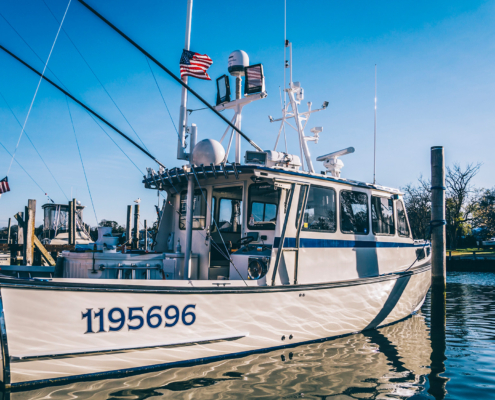 https://blog.durabritelights.com/wp-content/uploads/2025/03/Side-view-of-docked-boat-with-durabrite-lights.jpg
1250
2000
Abstrakt Marketing
/wp-content/uploads/2024/01/DuraBrite-Logo_6a362a2d-4dff-4723-a7e4-1466056fae1e_220x.png
Abstrakt Marketing2025-03-25 18:25:092025-03-31 17:39:29Boating Accident Statistics: How to Minimize Risks and Stay Safe
https://blog.durabritelights.com/wp-content/uploads/2025/03/Side-view-of-docked-boat-with-durabrite-lights.jpg
1250
2000
Abstrakt Marketing
/wp-content/uploads/2024/01/DuraBrite-Logo_6a362a2d-4dff-4723-a7e4-1466056fae1e_220x.png
Abstrakt Marketing2025-03-25 18:25:092025-03-31 17:39:29Boating Accident Statistics: How to Minimize Risks and Stay Safe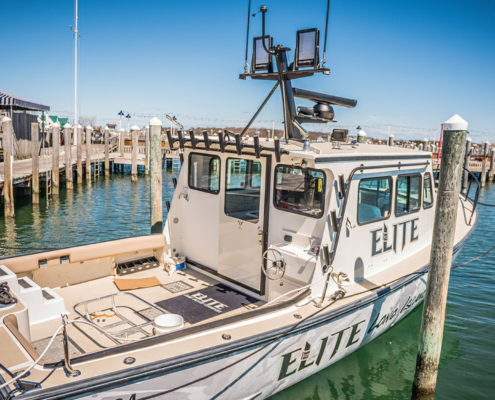 https://blog.durabritelights.com/wp-content/uploads/2025/03/Why-Waterproof-LED-Lights-for-Boats-Are-Essential—Even-Above-the-Water.jpg
1250
2000
Abstrakt Marketing
/wp-content/uploads/2024/01/DuraBrite-Logo_6a362a2d-4dff-4723-a7e4-1466056fae1e_220x.png
Abstrakt Marketing2025-03-07 13:12:212025-03-31 16:18:40Why Waterproof LED Lights for Boats Are Essential—Even Above the Water
https://blog.durabritelights.com/wp-content/uploads/2025/03/Why-Waterproof-LED-Lights-for-Boats-Are-Essential—Even-Above-the-Water.jpg
1250
2000
Abstrakt Marketing
/wp-content/uploads/2024/01/DuraBrite-Logo_6a362a2d-4dff-4723-a7e4-1466056fae1e_220x.png
Abstrakt Marketing2025-03-07 13:12:212025-03-31 16:18:40Why Waterproof LED Lights for Boats Are Essential—Even Above the Water https://blog.durabritelights.com/wp-content/uploads/2025/02/Rockland003-1-of-1.jpg
1250
2000
Abstrakt Marketing
/wp-content/uploads/2024/01/DuraBrite-Logo_6a362a2d-4dff-4723-a7e4-1466056fae1e_220x.png
Abstrakt Marketing2025-02-11 14:29:012025-02-18 19:38:54Prepare for the Unexpected With a Boat Emergency Kit
https://blog.durabritelights.com/wp-content/uploads/2025/02/Rockland003-1-of-1.jpg
1250
2000
Abstrakt Marketing
/wp-content/uploads/2024/01/DuraBrite-Logo_6a362a2d-4dff-4723-a7e4-1466056fae1e_220x.png
Abstrakt Marketing2025-02-11 14:29:012025-02-18 19:38:54Prepare for the Unexpected With a Boat Emergency Kit https://blog.durabritelights.com/wp-content/uploads/2025/02/Maxed-Out-Night-3.jpg
1250
2000
Abstrakt Marketing
/wp-content/uploads/2024/01/DuraBrite-Logo_6a362a2d-4dff-4723-a7e4-1466056fae1e_220x.png
Abstrakt Marketing2025-02-04 17:22:012025-02-18 18:07:19Simplify Safety and Enjoy Convenience With Remote Boat Lights
https://blog.durabritelights.com/wp-content/uploads/2025/02/Maxed-Out-Night-3.jpg
1250
2000
Abstrakt Marketing
/wp-content/uploads/2024/01/DuraBrite-Logo_6a362a2d-4dff-4723-a7e4-1466056fae1e_220x.png
Abstrakt Marketing2025-02-04 17:22:012025-02-18 18:07:19Simplify Safety and Enjoy Convenience With Remote Boat Lights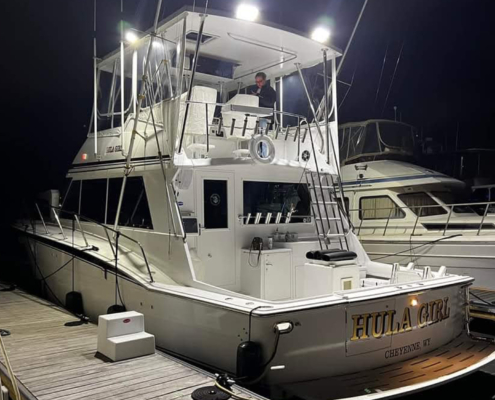 https://blog.durabritelights.com/wp-content/uploads/2025/01/Boat-Navigation-Tools.jpg
1250
2000
Abstrakt Marketing
/wp-content/uploads/2024/01/DuraBrite-Logo_6a362a2d-4dff-4723-a7e4-1466056fae1e_220x.png
Abstrakt Marketing2025-01-06 19:15:482025-01-09 21:55:47A Guide to Boat Navigation Tools
https://blog.durabritelights.com/wp-content/uploads/2025/01/Boat-Navigation-Tools.jpg
1250
2000
Abstrakt Marketing
/wp-content/uploads/2024/01/DuraBrite-Logo_6a362a2d-4dff-4723-a7e4-1466056fae1e_220x.png
Abstrakt Marketing2025-01-06 19:15:482025-01-09 21:55:47A Guide to Boat Navigation Tools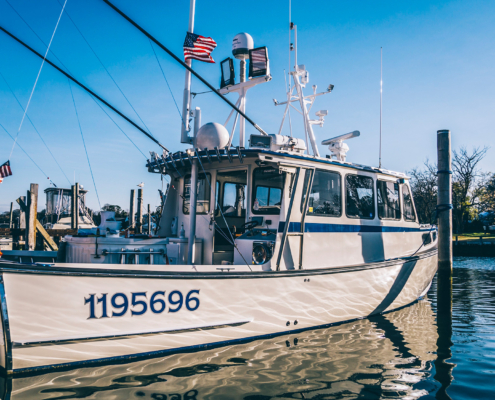 https://blog.durabritelights.com/wp-content/uploads/2024/11/Side-view-of-fishing-boat-sitting-on-calm-water-at-dock.jpg
1250
2000
Abstrakt Marketing
/wp-content/uploads/2024/01/DuraBrite-Logo_6a362a2d-4dff-4723-a7e4-1466056fae1e_220x.png
Abstrakt Marketing2024-11-25 17:02:052025-03-28 12:24:40Running AC vs. DC Power on Your Boat
https://blog.durabritelights.com/wp-content/uploads/2024/11/Side-view-of-fishing-boat-sitting-on-calm-water-at-dock.jpg
1250
2000
Abstrakt Marketing
/wp-content/uploads/2024/01/DuraBrite-Logo_6a362a2d-4dff-4723-a7e4-1466056fae1e_220x.png
Abstrakt Marketing2024-11-25 17:02:052025-03-28 12:24:40Running AC vs. DC Power on Your BoatCreating advanced lighting solutions that excel across extreme applications, from crab-fishing in Alaska’s Bering Sea, to unforgiving power plants to mission critical law enforcement and military tactical environments, all with uncompromising quality


